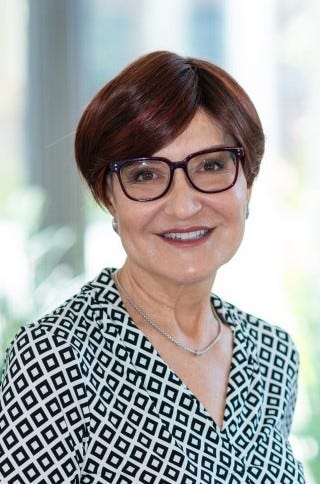The Foglight - The Pendulum Swings to Under Prescribing: When Doctors Miss the Person in Front of Them
August 2024
Issue #14 August 2024
In This Issue: Is it too hard to get small amounts of certain medications?
Overprescribing of narcotics contributed to the opioid epidemic. Now, the pendulum has swung from overprescribing to underprescribing, as doctors, constrained by time and rigid protocols, often miss the nuances of individual needs. Read the stories of true stories of two people who experienced this.
The Pendulum Swings to Under Prescribing: When Doctors Miss the Person in Front of Them
In recent posts, I have touched on the problem of doctors and other medical professionals who do not see the patient in front of them. They diagnose and treat the patient, but they do not have the time—often because of volume pressures—to really understand the patient in a holistic way. For example, they may discharge a patient without asking if he or she has the proper support to return home, manage their medication, or be safe.
Today, I’d like to talk about another way that doctors and other health professionals may not see the whole patient. I’d like to begin with a story—something that happened to a friend of mine.
This friend—let’s call her Elaine—had just had surgery to relieve a trapped nerve. She has the misfortune of having an autoimmune illness that causes chronic inflammation. For years, she had to take high doses of steroids to keep her inflammation somewhat under control. With the advent of new drugs, she has been able to reduce her steroid dose. But unfortunately, she was left with a problem with the nerves in her wrist and needed carpal tunnel surgery.
The surgery was a success, but the next day, Elaine was, unsurprisingly, in pain. She was told to take Tylenol and Motrin, which work well for many. However, she can’t take Motrin, so all she had available for pain relief was Tylenol. The Tylenol was not doing the trick. She called up her doctor. “I can’t take Motrin,” she told him. “The Tylenol isn’t working. I am very uncomfortable. What should I do?”
The first words out of the doctor’s mouth were, “I don’t prescribe narcotics.”
Elaine hadn’t even asked for narcotics. Yet, the doctor, being asked what he had available for pain management, immediately informed her that she would not be getting any narcotics from him. This is a huge shift from 20 years ago when a patient leaving the hospital after surgery would typically get a prescription for a month’s worth of Oxycodone (Percocet), Hydrocodone (Vicodin), or Codeine. (This was as much for the surgeon’s convenience as for the patient’s; the surgeon, wanting to reduce calls for prescription refills, would make sure the patient had enough not for a day, or a week, but for a month.) Other doctors did this too, contributing to the problems we are all familiar with—extra pills in Mom’s medicine cabinet, ripe for teenage pilfering and ultimately narcotic abuse problems. Today, the pendulum has swung completely in the opposite direction: from many doctors, no narcotics at all.
Elaine is not the first person who has told me they had surgery and got incomplete pain relief. Sometimes patients are under-treated for physical pain, and sometimes it’s for emotional pain.
I have another friend whose mother was dying. It was a tough road, with many ups and downs, and some intense moments. My friend asked her primary care physician if she could have 5 or 10 Ativan (Lorazepam) to help with her anxiety. In the past, during her divorce, my friend had taken a few Ativan, and she knew the drug would help her get through the rough patches with her mom. The doctor, who had known my friend for years, said, “I don’t prescribe Ativan anymore. If you want even five Ativan, you have to go see a psychiatrist.”
“But you know me!” my friend said to her trusted doctor. “You know I don’t abuse pills.”
But there was no quarreling with the doctor; rules were rules, and the doctor’s new rule took precedence over what she knew about her patient. To fight opioid addiction, it’s become more work to prescribe controlled substances like narcotics or benzodiazepines. Systems and best practices have been put in place to discourage patients from going from doctor to doctor, collecting prescriptions for controlled substances. There are registries to check and other safeguards. Then there are fears of liability. Many doctors have simply walked away from prescribing any narcotic or anti-anxiety medication.
My friend had to make a new appointment to see a psychiatrist whom she didn’t know—taking time from work and wasting over half a day to get a simple prescription. The intention was good—to prevent abuse—but the pendulum has swung too far.
Although quite different in the details, there are strong similarities to the case I wrote about a couple of months back, of doctors who failed to think of patients’ home environments when discharging them, not seeing the social situations. The problem is the same: the doctor does not have the time, interest, bandwidth, or flexibility to customize treatment for the patient in front of them. Instead, structural forces have made the doctor less sensitive than he or she could be to the specifics of the given patient. And, alas, the care gets worse.
The pendulum has swung from access to controlled medications that was too easy to under treating people in need. It’s time for a middle ground, seeing people as whole individuals, customizing advice and treatments to what the person actually needs.
Email me with your questions, comments, or subscription requests at gm@mymdadvisor.com. I’d love to hear from you.
Warmly,
Gerda Maissel, MD, BCPA
Dr. Gerda Maissel, Author
Dr. Maissel is a Board-Certified Physical Medicine and Rehabilitation physician and a Board-Certified Patient Advocate.






Very nice, thank you.